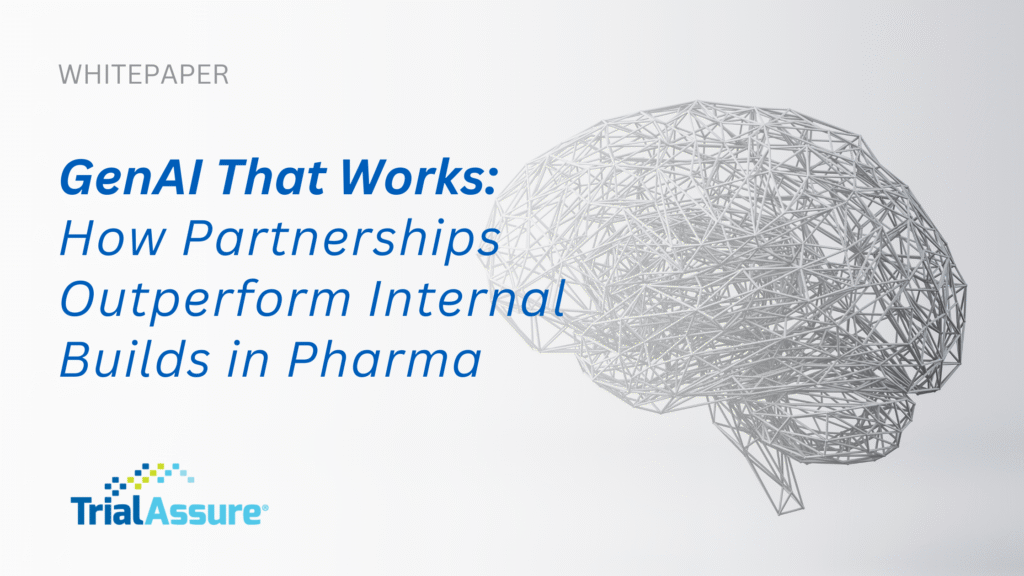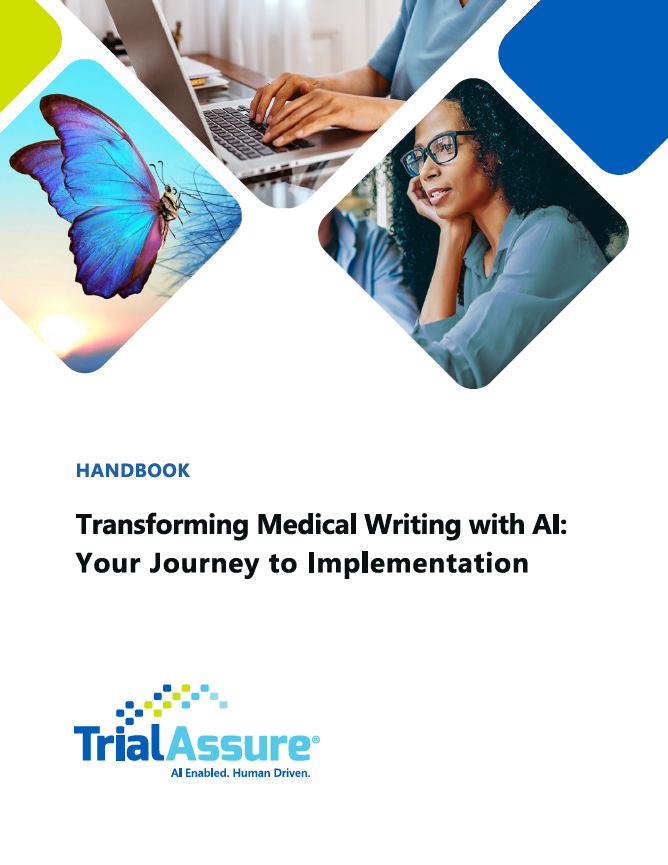The integration of artificial intelligence (AI) into pharmaceutical and biotechnology workflows has accelerated significantly in recent years. According to peer-reviewed research by the Tufts Center for the Study of Drug Development, et al, more than 65 percent of pharmaceutical and biotechnology companies, contract research organizations (CROs), and data and technology vendors servicing drug developers are piloting or actively using AI tools.
However, more than one-third of organizations remain cautious, unsure whether current AI capabilities are mature enough to justify investment or wide-scale adoption. To address these concerns, we spoke with Zach Weingarden, Director of AI Technology and Applications at TrialAssure, about the risks of waiting, the realities of today’s tools, and how to start effectively.

Q: Zach, many in the industry are asking whether now is the right time to implement AI. What is your perspective?
A: The reality is that current AI solutions, when implemented responsibly, are already delivering significant value. The pressures facing clinical teams are not going away. We will always see tight timelines, regulatory complexity, and workforce limitations due to the nature of the business we are in. What gives me hope is that AI can address these challenges, today. In my experience supporting sponsors and CROs, recommending a pilot to begin is often the best approach to gain full buy-in from across the organization.
One measurable gain that I witnessed recently was a CRO partner who was able to cut Informed Consent Form (ICF) preparation time in half. I have also seen others recently reduce secure data sharing timelines by more than 80 percent. Waiting for the “perfect” model means losing out on valuable learnings and efficiencies now.
Q: What does an ideal starting point look like for organizations exploring AI in medical writing?
A: A focused pilot is often the most strategic entry point. Start with a document type that follows a consistent structure and has minimal regulatory risk, such as plain language summaries (PLS) or plain language protocol synopses (PLPS). This allows teams to evaluate performance in a controlled environment and experience tangible results for themselves. I have personally witnessed those resistant to change begin to warm up to the idea of using AI after this in both large sponsors and nimble biotech companies. It builds confidence and provides a foundation for broader use cases.
Q: There has been some hype around the idea that AI can draft a Clinical Study Report (CSR) in seconds. What is your take on that?
A: AI can generate a draft quickly, but the process should still be guided by human expertise. Scientific documents carry a high burden of accuracy and context, and I believe that AI should be used to simply accelerate key stages of the writing process. When the team and I designed the LINK AI medical writing tool, our goal was to support medical writers throughout the workflow, offering structured prompts, template alignment, and integrated review tools. The goal was, and is, to save time and adhere to strict quality standards to support the writing process.
Q: Where do current AI systems still fall short?
A: I find that many AI tools in the pharma and biotech space struggle when they are faced with inconsistent input data, context-specific judgment, or nuanced regulatory requirements. These systems tend to perform well in structured, repetitive tasks. However, they seem to struggle in areas where scientific nuance, clinical judgment, or evolving regulatory guidance must be accounted for.
For instance, when drafting complex documents like Clinical Study Reports (CSRs) or handling patient narratives, generative AI models may produce output that appears complete but lacks the subtle logic or justification required for regulatory acceptance. This risk increases when tools are used without built-in quality checks, audit trails, or mechanisms for human feedback.
In my experience, AI works best when embedded in a larger framework that includes configurable workflows, role-based oversight, and methods for validating both input and output. Prompt engineering provides a starting point, but sustainable value comes from systems that incorporate real-time risk scoring, redline review capabilities, and documentation tracking. These features ensure that any AI output remains auditable and aligned with both internal standards and external requirements.
Q: What are some of the misconceptions teams have when starting with AI?
A: One of the most common misconceptions is that AI implementation is a plug-and-play solution that will immediately deliver value across workflows. Many teams enter AI pilots with the expectation that the technology alone can solve deeply rooted inefficiencies without first addressing foundational issues such as data quality, process maturity, or change management. This mindset can lead to frustration when results fall short or require more oversight than anticipated.
Another misconception is the belief that AI will eliminate the need for human involvement in complex processes like medical writing or clinical data and document anonymization. In practice, the most effective AI deployments are those that enhance human decision-making rather than attempt to replace it. Teams that understand how to build structured feedback loops and layered review processes see stronger outcomes and fewer setbacks. Many writers are already developing new “AI reviewer” skill sets, and this is already having an impact.
There is also a tendency to overestimate what current models can do and underestimate the effort required to tune them for clinical use. AI that performs well in general contexts often underdelivers in life sciences settings unless it has been fine-tuned to domain-specific needs, paired with secure infrastructure, and subjected to rigorous validation. From my experience, the best-performing companies start with defined pilot scopes and measurable outputs then scale gradually.
Q: What are the immediate benefits teams are seeing when they adopt AI thoughtfully?
A: In well-designed pilots, the TrialAssure team is consistently seeing time-to-first-draft reductions between 60 and 80 percent, compared to manual effort. Recently, one organization reviewed their AI output side-by-side with a manually created document based on the same build criteria, and the AI output was preferred by half of the reviewers. This moment helped that biotech sponsor realize that if the AI output is practically indistinguishable from a manual draft, that it should be part of the process going forward. More importantly, teams like this are building internal trust in the technology. They are learning what works, what requires refinement, and how AI can be used to complement scientific human intelligence. By building AI-ready processes today, they will be better equipped to adapt quickly as models improve, providing a compounding advantage. That shift in mindset will be critical for organizations looking to stay competitive and compliant in the years ahead.
To reach Zach Weingarden, request a call with him at https://www.trialassure.com/about/contact/.



